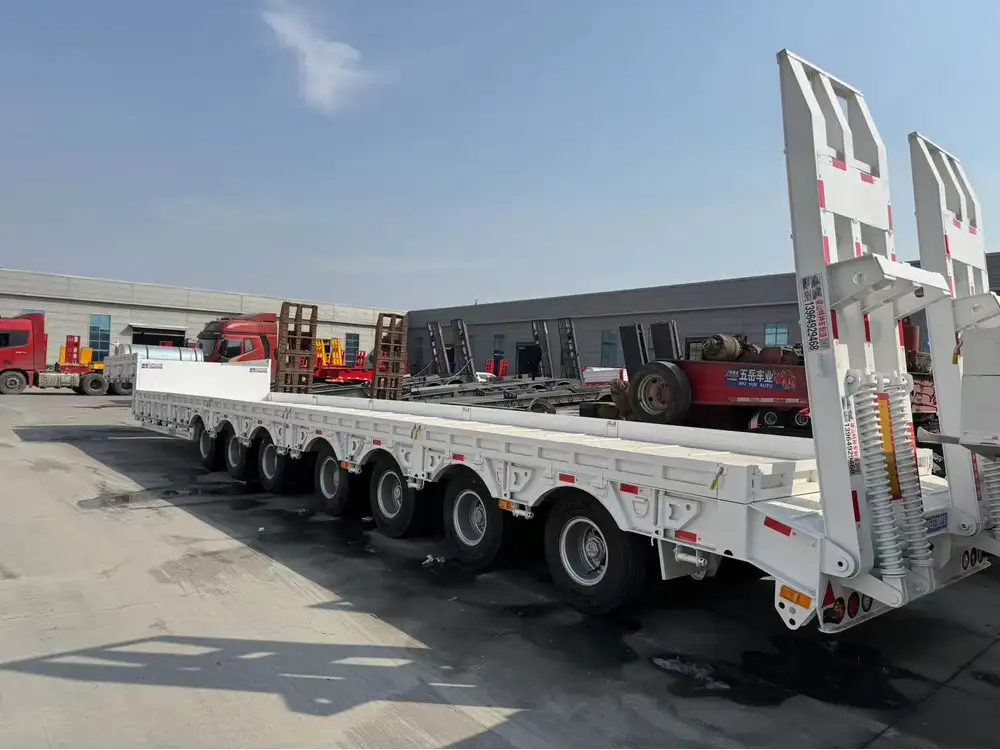When considering the logistics of transporting a Ford F150, understanding how it fits into various trailer options is crucial for businesses and individuals alike. Semi-trailers are a vital component in the trucking industry, capable of hauling substantial payloads across vast distances. This article dives deep into the dimensions of the Ford F150, the configurations of standard semi-trailers, and critical considerations to ensure that your transportation needs are met with precision.
Understanding the Dimensions: Ford F150 Unleashed
The Ford F150 is a robust, versatile pickup truck, revered for its performance and reliability. Here’s a detailed overview of its dimensions:
| Model Year | Length | Width | Height | Wheelbase |
|---|---|---|---|---|
| 2021 F150 | 75.6 in | 79.9 in | 75.6 in | 145 in |
| 2022 F150 | 75.6 in | 79.9 in | 75.6 in | 145 in |
| 2023 F150 | 75.6 in | 79.9 in | 76.9 in | 145 in |
Additional Specifications
Curb Weight: Varies between 4,021 lbs to 5,000 lbs depending on configurations.
Payload Capacity: Typically between 1,500 lbs to 3,325 lbs, allowing for ample hauling capability.
Understanding these measurements provides a foundation for assessing compatibility with a semi-trailer.

Semi-Trailer Dimensions: A Broad Perspective
A semi-trailer is composed of two parts: the trailer itself, which is towed by a tractor unit. The standard dimensions most commonly found in use are pivotal for determining if the F150 can be accommodated.
Standard Dimensions
| Type of Trailer | Typical Length | Typical Width | Typical Height |
|---|---|---|---|
| Standard Flatbed | 48-53 feet | 8.5 feet | 13.5 feet |
| Enclosed Trailer | 48-53 feet | 8.5 feet | 13.5 feet |
| Reefer Trailer | 48-53 feet | 8.5 feet | 13.5 feet |
Special Considerations
- Loading Ramp Angle: Ensuring a manageable incline to load an F150 safely.
- Weight Distribution: Overweight loads can lead to legal repercussions and potential safety hazards.
- Trailer Configuration: The type of hitch and specific trailer design could affect fit.

Will an F150 Fit in a Semi-Trailer?
In-Depth Analysis
To confirm if an F150 can fit into a semi-trailer, consider the following aspects:
Height Clearance: The average F150 stands approximately 75 inches tall. With a minimum interior height of around 104 inches in most standard semi-trailers, this truck can fit comfortably.
Length Accommodation: An F150 typically ranges from 17 to 20 feet, inclusive of its bed size. A standard 48 to 53-foot trailer provides ample linear footage for fitting multiple vehicles, including the F150.
Weight Restrictions: Most semi-trailers have a gross vehicle weight rating (GVWR) of 80,000 lbs. Factor in the combined weight of the truck and trailer when considering legal weight limits.
Width Compatibility: The standard width of an F150 is 79.9 inches, which is within the permissible width of most trailers, allowing space for side mirrors and other attachments.
Conclusion of Compatibility
In summary, yes, an F150 can fit comfortably into a semi-trailer, provided that due consideration is taken to weight and safety regulations.

Loading and Unloading: Best Practices
To ensure the safe transportation of your Ford F150, proper procedures for loading and unloading are paramount. Here’s how to effectively manage the operation:
Preparation Steps
- Select the Right Trailer: Ensure you choose a trailer suitable for pickup trucks.
- Check Weight Limits: Confirm that the combined weight of the load does not exceed the trailer’s limits.
- Use Proper Equipment: Loading ramps, winches, and cranes might be necessary based on the height and weight of the truck.
Loading Process
- Position the Trailer: Ensure that the trailer is on flat ground to avoid rolling while loading.
- Load from the Rear: Position the F150 with the trailer at a slight angle if necessary, particularly with a loading ramp.
Visual Example of Loading Arrangement:
/-----------\
| |
| F150 |
|___________|
RAMP-------|
TRAILER |
|-----------|
Unloading
- Slow Descent: When unloading, execute a gradual descent down the ramp to prevent sudden movements.
- Check Surroundings: Always ensure a clear area to avoid accidents.
Safety Requirements
- Wear Safety Gear: Helmets, gloves, and safety shoes can prevent injuries while working with heavy machinery.
- Utilize Spotters: Employ someone to guide the process, ensuring proper clearance and safety.
Logistics: Considerations Beyond the Fit
Even if the F150 fits within the trailer dimensions, logistics play a crucial role in transporting vehicles. Here are some considerations:

Legal Restrictions
- Weight Laws: Adhering to state and federal weight limits is imperative to avoid fines.
- Permit Requirements: Some states require permits for oversized loads.
Insurance Considerations
Understanding the insurance coverages available while transporting vehicles is a vital factor. Discuss with your provider about coverage options for cargo during transit.
Insurance Coverages to Consider
| Coverage Type | Details |
|---|---|
| Cargo Insurance | Coverage for losses during transport. |
| Liability Insurance | Protects against damages to third-party property during operations. |
| Comprehensive Insurance | Coverage against theft, vandalism, or natural disasters during transit. |

Conclusion: The Answer Lies in the Details
In conclusion, transporting a Ford F150 in a semi-trailer is entirely feasible, provided that you take into account the various logistical, regulatory, and procedural aspects in this complex operation. Always prioritize safety, compliance, and thorough planning to ensure a smooth transportation experience.
Whether for a business or personal need, remember to evaluate all dimensions—both literal and logistical—before making critical decisions in your transportation process. With this comprehensive understanding, you can confidently navigate the challenges of transporting an F150 and ensure that it reaches its destination safely and efficiently.



